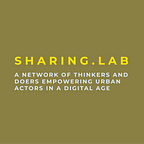The smart city backlash: don’t throw the baby out with the (digital) bathwater!
While the market prospect for smart city solutions is still huge, more and more voices are raising to the fore to undermine the concept. Within the last days, CityLab published an interview with Jan Gehl advocating for cautiousness, when it comes to smart solutions. Similarly, Le Monde gave an article with the title “The Smart City is not effective anymore” while Maddyness explains “Smart city: why the computer city is not a desirable future”. And we could go on with several other examples. The smart city was being praised to the skies ; is it now on the way to becoming the new evil? We need to find a middle way!
The criticisms of smart cities could be summarised as follows:
- An obsession with surveillance and risks related to personal freedom, which the EU General Data Protection Regulation (GDPR) seeks to address. It will be enforced at the end of the month.
- A tech fascination that overshadows real problems. Yet, while solutionism still prevails in some municipalities, cities like Boston for example, now clearly state that service providers need to stop sending their sales people and rather start a dialogue about the city’s real challenges. The “we do because we can” approach is not the way forward.
- A lack of comprehensive strategies. The smart city is a battlefield where big industries, start-ups, digital platforms, civic initiatives, etc. fight to find their place under the sun. There is a need for municipalities to organise innovation better and share clear strategies about the urban future they want to build. It is both a matter of governance and a question of vision. This is especially the case when it comes to data. As Mathieu Saujot, from research institute IDDRI explains “In the new context of data abundance, it is necessary for local governments to act both as an organiser and a mediator, and to give meaning to innovation” (own translation from Le Monde article, in French).
- A resource and competence challenge for municipalities. From a city perspective: how to navigate in an ever-changing environment, where technologies change all the time and become quickly obsolete?
- A narrow commercial focus. The smart city battlefield almost only focuses on commercial solutions and addresses the needs of consumers, while citizens are often left behind. Accompanying social and civic innovation needs to be higher on the agenda and cities can put a brake on startups’ hackathons. Indeed, even though smart city discourses often stipulate that they can empower citizens, this promise still has to be properly unfolded.
That being said: we should not throw out the baby with the digital bathwater! The smart city was being praised to the skies and is now on the way to becoming the new evil. Going from one extreme to the other is not the way forward.
Here, we would just like to highlight one very concrete example. In the above-mentioned interview, Jan Gehl argues that one of the reasons why Copenhagen succeeded in becoming a walkable and bikeable city (I think it is debatable how walkable the city is, but this is another discussion), is that him and his acolytes from the university have been pioneers in documenting quantitatively the evolution of public spaces and how they affected people’s flow and activities. This evidence-based approach has had a very powerful impact. Just as traffic engineers do, Gehl and his people were able to provide politicians with statistics and grounded arguments showing, that when you create people-centered public spaces, rather than car-centric ones, you attract more people.
However, while methods to analyse public spaces have been greatly refined, the tools used to document people’s life in public spaces almost haven’t changed in decades, as explained in this article. Hand counting, anthropological studies and educated assumptions by urbanists and park managers still prevail. Clearly, this is an area, where qualitative studies and yesterday’s counting methods could benefit from more precise and comprehensive gathering of data, as well as professional analysis of these pieces of information. In terms of urban life and attractiveness, adopting digital technologies, sensors and collecting new data could help document how weather conditions, noise, temporary projects, pop-up installations, festivals, holidays, time of the day and nights,… impact usage. This would help landscape architects and urban planners make informed decisions about the development of public spaces; for them to be more pleasant, inclusive and attractive places.
As we argued in an earlier post, we don’t need to call that smart city. But dropping the term should not mean ignoring the potentials of technologies for better cities. Along with Evgeny Morozov and Francesca Bria, we believe that:
“Cities can harness the power of technology and digital innovation to benefit all citizens and improve the economy’s diversification, making it more plural, sustainable and collaborative.” (RETHINKING SMART CITIES. Democratising urban technologies).
/ Caroline
Caroline de Francqueville Hansen is a French urban strategist, with experience from France and Denmark, focussing on urban innovation.
Sharing.Lab is a non profit organisation based in Copenhagen, that focuses on social resilience. Want to hear more about us? Please do not hesitate to reach out: info@sharinglab.dk
Follow us on twitter for more news
